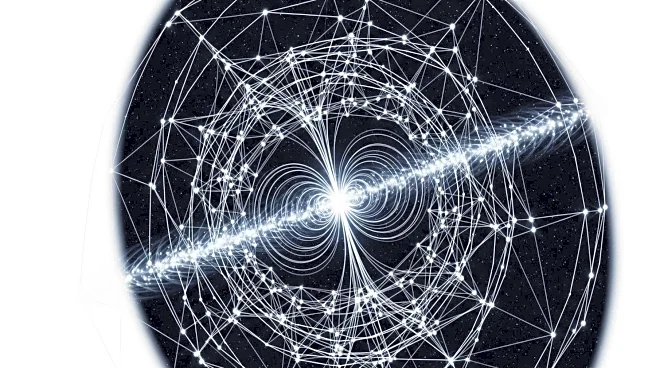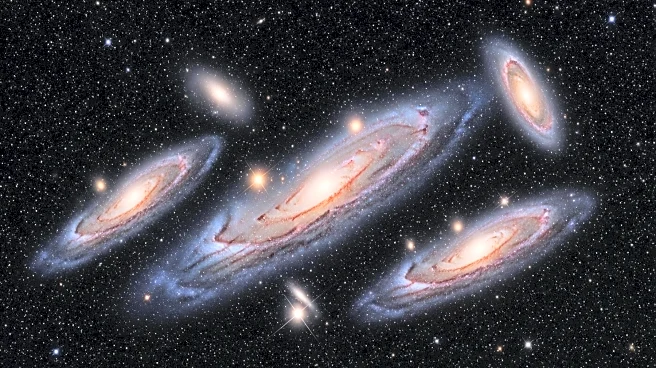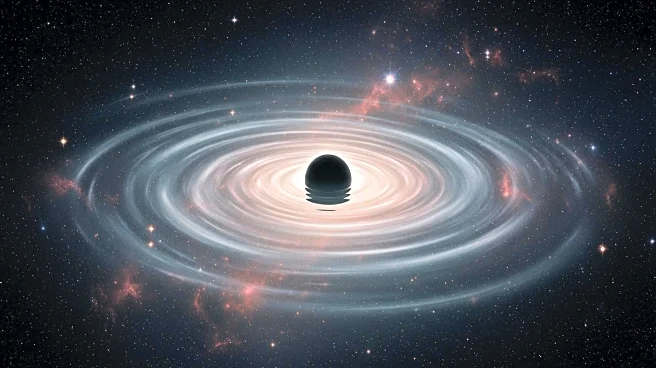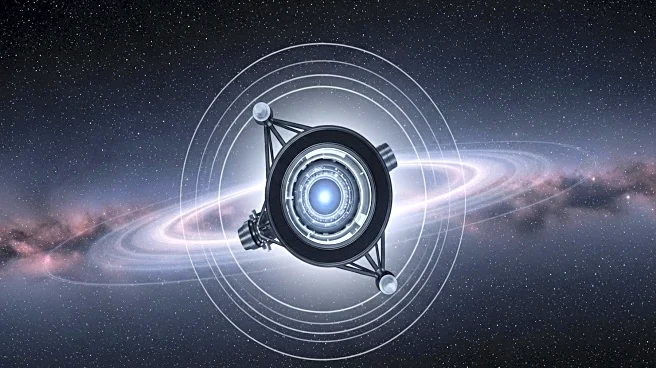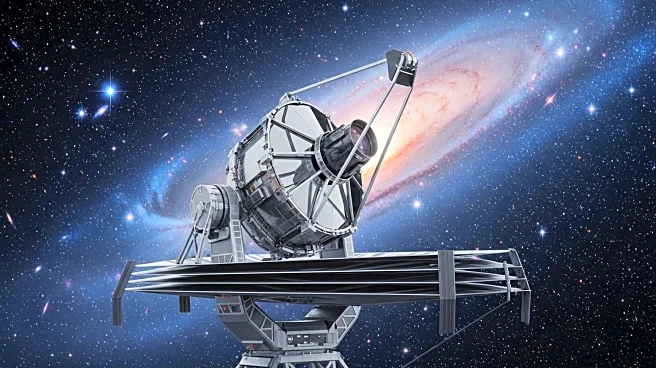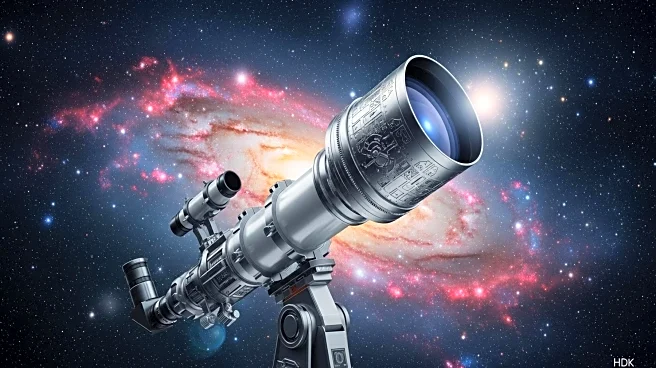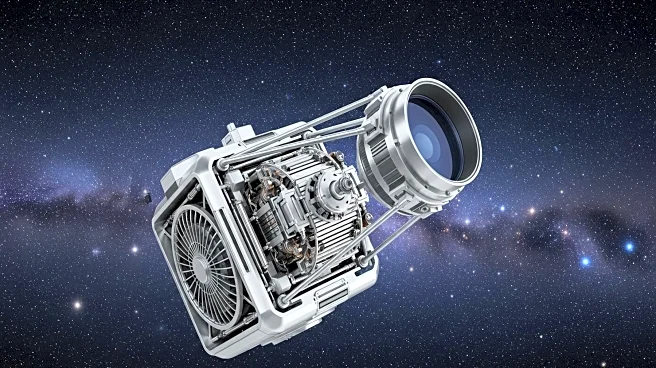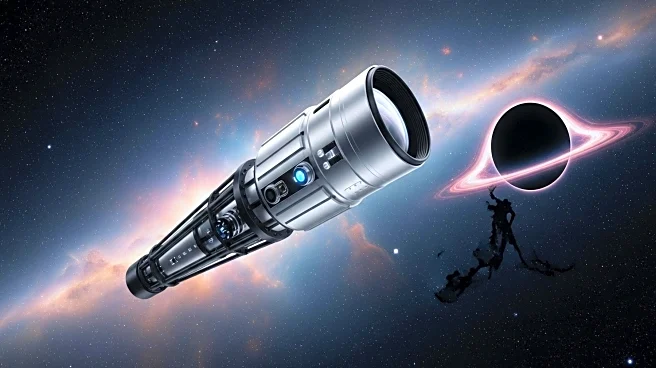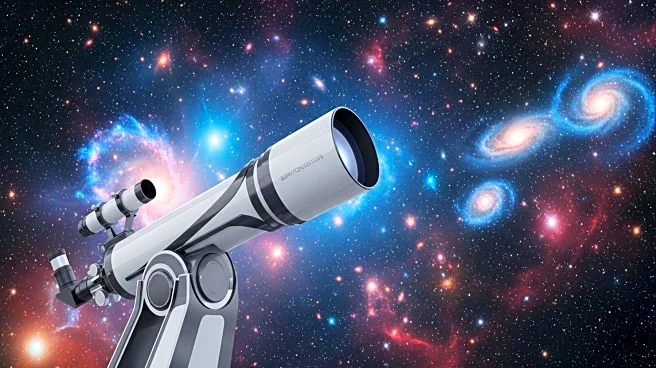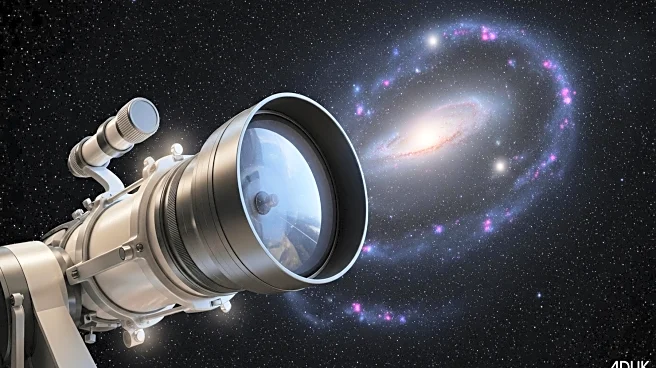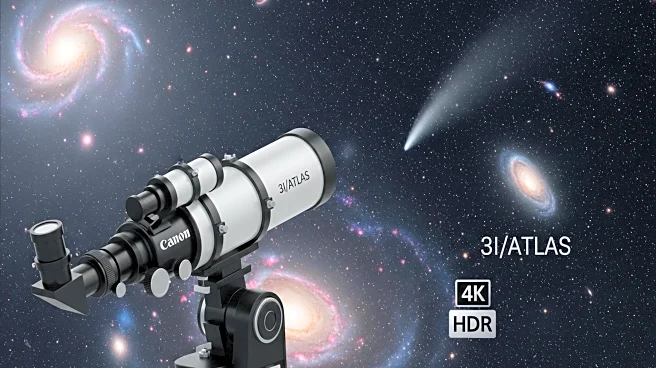What's Happening?
Research conducted by SISSA and several universities has revealed that magnetic fields in the early universe were billions of times weaker than a fridge magnet, yet their traces persist in the cosmic web. Using around 250,000 computer simulations, the study established a new, lower upper limit for these fields, refining understanding of early cosmic evolution and the formation of stars and galaxies. The findings suggest that the cosmic web, a filamentary structure connecting galaxies, is magnetized not only near galaxies but also in distant, sparsely populated regions.
Why It's Important?
The study provides new insights into the early universe's magnetic fields, which play a crucial role in cosmic structure formation. Understanding these fields helps refine models of the universe's evolution, impacting theories about star and galaxy formation. The research also highlights the importance of primordial magnetic fields in shaping the cosmic web, offering potential explanations for its magnetization. These findings could influence future observational strategies and theoretical models in cosmology.
What's Next?
Further validation of the study's results may be possible through observations made by the James Webb Space Telescope. The new limits on magnetic field intensity could lead to improved models of cosmic evolution and structure formation. Researchers may continue to explore the impact of primordial magnetic fields on the universe's development, potentially uncovering new aspects of cosmic history.
Beyond the Headlines
The study emphasizes the role of advanced simulations in cosmology, allowing researchers to test hypotheses about the universe's early conditions. It also highlights the collaborative nature of modern scientific research, involving multiple institutions and disciplines to achieve comprehensive results.
